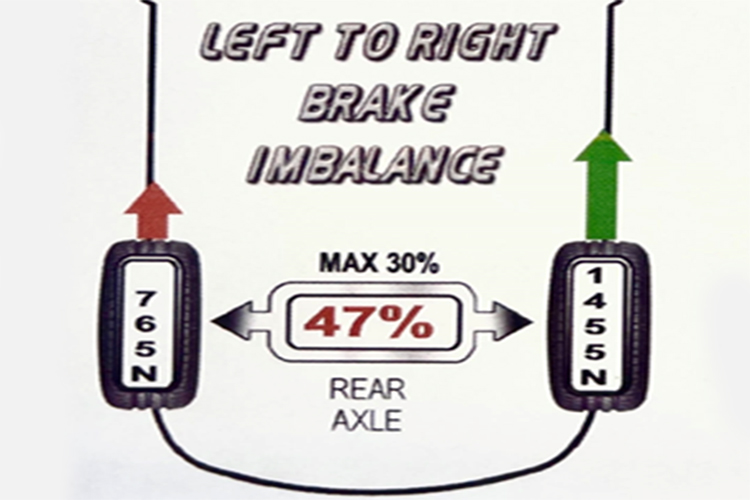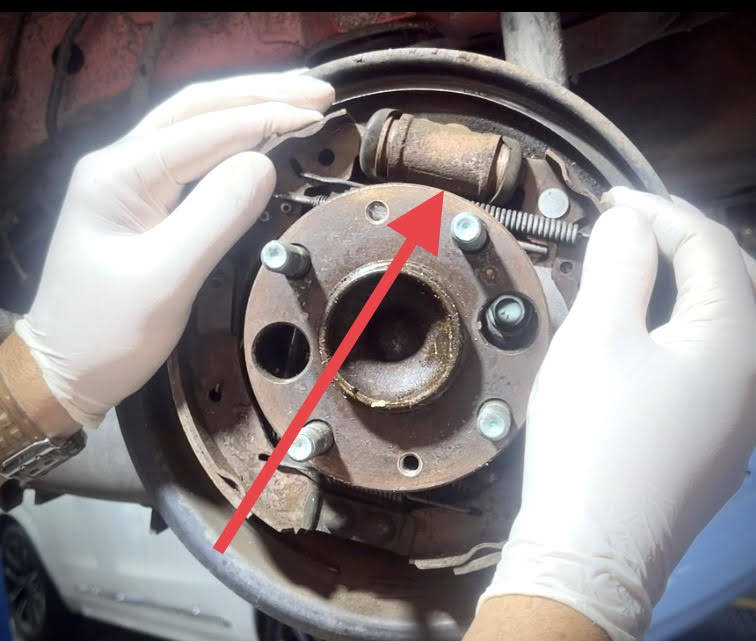Blog
Brake Cylinders Failure – Detection & Consequences

As a brake specialist we have the equipment to test the balance between both front driver side and front passenger side to know whether they are in balance with each other in stopping ability. Likewise the rear driver and the passenger side also. The picture above clearly shows the rear wheel imbalance.
Without this test equipment it would have take about an hour to find this manually, test equipment time 3 minute. A huge saving cost for customer.

In an emergency braking situation this could have resulted in the car spinning out of control with disastrous consequences.
It is the function of the brake cylinder is to expand in response to the pressure brake fluid due to the brake pedal being depressed. In this case the cylinders were seized and could not move. Consequently the brake pads were not forced against the brake drum and no braking action took place.
Even under normal driving conditions the vehicle would have taken longer to bring the car to a stop.
RECENT POSTS & TIPS
- How to Trace a Fault in an EV High Voltage Battery
- Never Lose Your Car Keys Again
- Cross Section Of A Typical Water Themostat
- Testing of EV AC Electric Motor Phase Resistance Balance Test of The Windings
- Brake Fade
- Instructions for Jump Starting a Car
- Low-Pressure Exhaust Recirculation Filter (ERF)
- Reasons for front wheel bearings to breakdown
- Brake Cylinders Failure - Detection & Consequences
- Pollen Filters
- Will a DPF regeneration cure the blocked exhaust issue?
- Why should I change the oil filter each time I change the engine oil in my car?
- What Is AdBlue ?
- Origins of Suspension Systems for Modern Vehicles
- Parasitic Battery Drain
- ELECTRIC VEHICLES – A SIMPLE EXPLANATION
- GIL’S FORESIGHT, ELECTRIC VEHICLES WERE COMING
- MECHANICS OF VARIOUS BRAKE SYSTEMS
- SCAN TOOLS DO NOT FIX CARS. HIGHLY QUALIFIED MECHANICS DO.
- TOYOTA PRIUS HYBRID BATTERY REPAIR






